


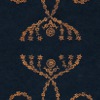
|
|
Title | A Treasury of Hans Christian Andersen
| |
Author | Hans Christan Andersen
| |
Cover Art | ---
| |
Publisher | International Collector's Library - 1974
| |
First Printing | ---
|
|
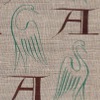
|
|
Title | Andersen's Fairy Tales
| |
Author | Hans Christan Andersen
| |
Illustrated By | Arthur Szyk
| |
Publisher | Grosset & Dunlap - 1945
| |
First Printing | ---
|
|
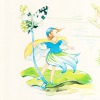
|
|
Title | Hans Christian Andersen Stories
| |
Author | Hans Christan Andersen
| |
Illustrated By | Rene Cloke
| |
Publisher | Award Publications - 1982
| |
First Printing | ---
|
|
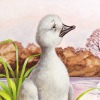
|
|
Title | The Ugly Duckling
| |
Author | Lucy Kincaid
| |
Illustrated By | Gillian Embleton
| |
Publisher | Brimax Books - 1981
| |
First Printing | ---
|
|
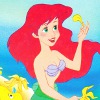
|
|
Title | The Little Mermaid
| |
Author | Disney
| |
Illustrated By | Disney
| |
Publisher | W.H. Smith Publishers - 1989
| |
First Printing | W.H. Smith Publishers - 1989
|
|
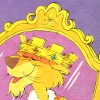
|
|
Title | The Emperor's New Clothes
| |
Author | Hans Christian Andersen
| |
Illustrated By | Disney
| |
Publisher | Random House - 1975
| |
First Printing | ---
|
|
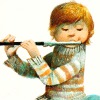
|
|
Title | The Book of Goodnight Stories
| |
Author | Vratislav Stovicek
| |
Illustrated By | Karel Franta
| |
Publisher | Royce Publications - 1982
| |
First Printing | ---
|
| |
|
Category | Children
| |
Warnings | None
| |
Main Characters | Many
| |
Main Elements | Fairies, Wizards, Witches, Ghosts, Angels, nthropomorphic
|
|

 A Treasury of Hans Christian Andersen A Treasury of Hans Christian Andersen
- The Tinderbox
- Little Claus and Big Claus
- The Princess and the Pea
- Little Ida's Flowers
- Inchelina
- The Naughty Boy
- The Travelling Companion
- The Little Mermaid
- The Emperor's New Clothes
- The Wild Swans
- The Garden of Eden
- The Flying Trunk
- The Storks
- The Sandman
- The Rose Elf
- The Swineherd
- The Buckwheat
- The Angel
- The Nightingale
- The Sweethearts
- The Ugly Duckling
- The Pine Tree
- The Snow Queen
- The Darning Needle
- The Bell
- The Hill of the Elves
- The Red Shoes
- The Jumping Competition
- The Shepherdess and teh Chimney Sweep
- The Little Match Girl
- Little Tuck
- The Shadow
- The Old House
- A Drop of Water
- The Happy Family
- The Collar
- The Flax
- The World's Most Beautiful Rose
- The Year's Story
- It is Perfectly True!
- The Swan's Nest
- The Pixy and the Grocer
- The Millennium
- Under the Willow Tree
- Five Peas from the Same Pod
- The Piggy Bank
- Ib and Little Christina
- Clod Hans
- The Bottle
- The Old Oak Tree's Last Dream
- The Bog King's Daughter
- The Girl Who Stepped on Bread
- The Pen and the Inkwell
- The Dead Child
- The Cock and the Weathercock
- The Dung Beetle
- What Father Does is Always Right
- The Snowman
- The Ice Maiden
- The Butterfly
- The Snail and the Rosebush
- The Silver Shilling
- The Teapot
- The Snowdrop
- Who was the Happiest?
- The Adventures of a Thistle
- A Question of Imagination
- The Days of the Week
- The Great Sea Serpent
- A Gardener and his Master
- The Professor and the Flea
 Andersen's Fairy Tales Andersen's Fairy Tales
- The Garden of Paradise
- Little Tiny
- The Fir Tree
- The Storks
- Little Ida's Flowers
- The Red Shoes
- The Ugly Duckling
- The Girl Who Trod on a Loaf
- The Bottle Neck
- The Snow Queen
- The Marsh King's Daughter
- The Wild Swans
- Great Claus and Little Claus
- The Shepherdess and the Sweep
- The Bell
- The Angel
- The Nightingale
- Holger the Dane
- The Emperor's New Clothes
- The Steadfast Tin Soldier
- The Little Match Girl
- The Swineherd
- Elder-Tree Mother
- Hans Clodhopper
- The Princess and the Pea
- What the Good Man does is Always Right
- The Roses and the Sparrows
- The Old Street Lamp
- The Tinder Box
 Hans Christian Andersen Stories Hans Christian Andersen Stories
- Thumbelina
- The Princess and the Swineherd
- The Shepherdess and the Chimney-Sweep

Hans Christian Andersen was a prolific Danish poet and writer from 1805-1875. Upon discovering A Treasury of Hans Christian Andersen that belonged to my mother, and Andersen's Fairy Tales that belonged to my father, and the Disney-fied Little Mermaid that belonged to my younger sister, plus the remaining books that all belonged to me, I decided to read them all and compare.
Everyone knows of The Little Mermaid, The Ugly Duckling and Thumbelina (Inchelina), but there were so many I had never read before. Or there were many that I had heard of, like The Little Match Girl but for some reason couldn't remember it at all. There are probably not that many people who can repeat the story of The Professor and the Flea, or The Teapot. Actually there are so many of them it would be impossible to remember them all unless you were an Andersen scholar! And for what it was worth, a lot of the shorter ones were very similar to each other so I don't highly recommend reading them all one after another like I did across a couple of weeks.
I started off reading them assuming they were simply silly children's fairy tales, but there is also a fable aspect to many of them, a moral wrapped up in the tale. Or a satirical commentary about the world. He even has some stories discussing modern technology such as the underwater telegraph system that was being installed in the late 1800's, and how all the fishes of the ocean thought it was some great sea serpent. Or a great comment about how the world was turning into a tourist attaction for rich American tourists! While witches, and wizards and fairies abound, you won't find many other fantasy creatures like unicorns or dragons, just talking animals, plants and objects. And there are a fair share of tales that have no magical element at all other than the way the story was told! Several of the stories have a very Christian (as in religion, not the author!) aspect to them, others are more folk tales.
While some of the tales he wrote were retelling of older folk stories, his most famous stories were his own creations. The Ice Queen, the Little Mermaid and Thumbelina all sprouted from his imaginative mind. While the Brother's Grimm are famous in their own right, they tended to retell existing stories (for example I always thought Cinderalla was theirs but it really belongs to French author Charles Perrault).
One warning when reading accurate translations as opposed to retellings of the tales, the vast majority of the tales do not have happy endings. The Little Mermaid does not get her prince, her sacrifices were in vain! This is generally the case with fairy tales, often they weren't there just to entertain, some where to teach and others to frighten. While Grimm stories can be scary, Andersen never is (well other than the story of the red shoes where the only way the girl who wore them could stop dancing was to ask a farmer to cut off her feet, and even then her shoes with her severed feet inside followed her around dancing...ick), but there are a lot of sad or bittersweet endings.
Now to each of the books themselves.
A Treasury of Hans Christian Andersen was the most complete collection out of the set, and while I can't compare to the original Danish in which it was written, the translator's introduction explained how he strove to not just translate the stories, but to keep the style in tact as well. And indeed there is a distinct style to Andersen's writing, it's very choppy with short sentences, it certainly doesn't flow smoothly, but that is as much a part of the story as the story itself.
Andersen's Fairy Tales also has quite a few stories, less than the previous, but it has four that the Treasury was missing. Now you might look at the listing above and think that there are many more, but that's just due to a different translator, the words differ a little but the stories are the same (I checked!). This book however has lovely illustrations, though some of them are a little creepy, it's the way the artist drew human eyes.
Hans Christian Andersen Stories is a retelling of the tales for young readers, not direct translations. The tales may not be complete, or might be slightly changed. But this is one of the books that will live on from my childhood memories, a picture tells a thousand words and will stay with you long after the words have faded from memory, and this book has lovely illustrations.
I have separate reviews for The Ugly Duckling, The Emperor's New Clothes and The Little Mermaid. Which brings me to the last book which I included simply because I found a few stories in there. The book was designed such that for every day of the year a little story could be read to your child, some taking two or three days to complete. Thus unless the story was really short to begin with, they will be very abridged.
And of course, a good source of Andersen's fairy tales is right on the internet. Project Gutenberg has a great deal of Andersen's writings, and while I haven't had a chance to look at everything yet, there are some writings that are not part of his fairy tale collections that I'd like to read through.
|











